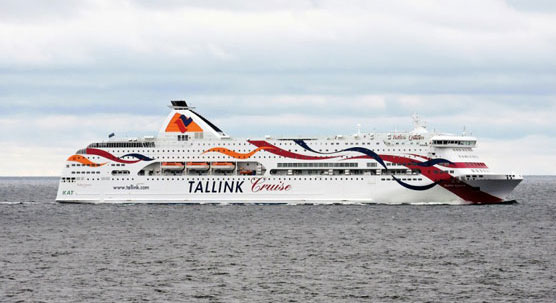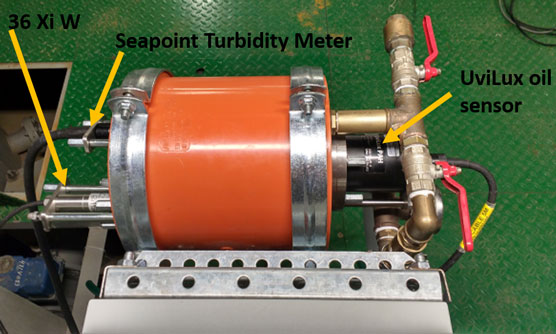Press release 2017-03-24 at 10:03

Ships can assist the monitoring of oil spills with the FerryBox technology. Photo: Igor Dilo, shipspotting.com
The EU-funded project GRACE, coordinated by the Finnish Environment Institute, has launched a system for real-time monitoring of oil compounds in open seawater. ”This kind of technology could have a great potential onboard on many types of vessels that operate eg. in the Arctic such as fuel transportation and other supply vessels”, project coordinator Kirsten Jørgensen says.
Due to increasing shipping activity in the Baltic Sea and in the Arctic, the probability of oil spills occurrence is rising, mostly on major ship routes. Oil spills are nowadays most commonly detected with methods based on aerial and satellite data, therefore in situ instrumented observations are of high demand and value. As ships on certain routes can easily be used as measurement platforms, including the system called FerryBox- technology, which has been used for at least 25 years.
“We have upgraded it with oil detection capability and relevant real-time data transfer in order to obtain on-line data on concentration of oil compounds in the surface layer of the sea”, senior scientist Tarmo Kõuts from Marine Systems Institute, Tallinn University of Technology explains.

FerryBoxes have mainly been used for data linked to eutrofication and traditional oceanography. The FerryBox on M/S Baltic Queen has been upgraded with oil detection capability and relevant real-time data transfer. Photo: Kaimo Vahter.
“So far the FerryBoxes have mainly been used for data linked to eutrofication and traditional oceanography. The extension of these data with data for harmful compounds such as oil compounds is a great step forward. The detection of harmful substances such as oil compounds is much more challenging due to the nature of the compounds and the analysis methods. More validation of the oil sensor data with actual laboratory analysis is still needed. The measurement of oil in the waterbody can also be used to confirm signals from remote sensing to be true oil spills”, Tarmo Kõuts continues.
The FerryBox system on board M/S Baltic Queen (Tallink Group Ltd) on Tallinn-Stockholm route was upgraded with oil detection functionality in February. On-line data are shown on the web based user interface - http://on-line.msi.ttu.ee/GRACEferry/. It allows viewing and first analysis of FerryBox’s and ship’s dataset – historical data and momentary situations, in form of color-coded measurement points as well as 2D graphs and in tabulated form can be viewed. The resulting dataset is with spatial resolution of 100-150 m along the ship track, with coverage once a day between Tallinn and Stockholm.
This kind of oil compounds monitoring in the water is exceptional and has importance for real time oil detections as well as localization of oil spills and for statistics over longer periods, in order to estimate the net impact of small oil releases on the marine environment.
The FerryBox system with oil detection functionality is being developed by the MSI at TUT within the EU Horizon 2020-funded project GRACE, coordinated by the Finnish Environment Institute SYKE. The GRACE project – Integrated oil spill response actions and their environmental effects – started in March 2016 and focuses on developing, comparing and evaluating the effectiveness and environmental effects on different oil spill response methods in cold climate. Furthermore, the project develops real-time observation of underwater oil spills and a strategic tool for choosing oil response methods.
More information
GRACE project coordinator Kirsten Jørgensen, Finnish Environment Institute
firstname.lastname@ymparisto.fi, tel. +358 295251245
Senior scientist Tarmo Kõuts, Tallinn University of Technology, Marine Systems Institute
firstname.lastname@msi.ttu.ee, tel. +372 51 09 744